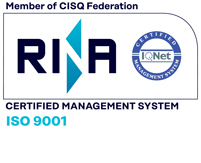Corea del Sud
KOREA ZINC TO UP SALES TO $19 BILLION BY 2033 WITH GREEN ENERGY
South Korea’s and the world’s largest lead and zinc smelter, will accelerate its drive to foster its new growth engines of renewable energy, green hydrogen and battery materials to jack up its revenue to 25.3 trillion won ($19 billion) in 10 years, the company announced on Thursday. At the company’s investor day event in Seoul, Park Ki-deok, president and co-chief executive officer of Korea Zinc, announced that it will raise sales from its new growth businesses in renewable energy, green hydrogen, resource recycling and battery materials to 12.2 trillion won in 2023, similar to that of its mainstay smelting business, which is estimated at about 13 trillion won. The latest announcement comes after the company at end-2021 picked battery materials, waste recycling, renewable energy and green hydrogen as its new growth drivers under the direction of Korea Zinc Vice Chairman and co-CEO Choi Yun-Birm. The third-generation leader from its founding family has been aggressively pursuing the new growth engines to expand its business beyond non-ferrous metal smelting since he took the helm of Korea Zinc in 2019. To bolster its sales by more than 2.5 times from now, Korea Zinc will invest 12 trillion won in those new growth engines, its so-called Troika Drive, from next year to 2033 and 5 trillion won in the non-ferrous metal smelting business over the same period. In August last year, the company vowed to invest 9.74 trillion won in Troika Drive businesses until 2030. TROIKA DRIVE Troika Drive businesses aim to leverage Korea Zinc’s metal extraction know-how to produce green energy materials and recycle them. The company will focus on ramping up the annual production capacity of key lithium-ion battery raw materials nickel sulfate, precursors and copper foils to 85,000 tons, 80,000 tons and 60,000 tons, respectively, by 2033 to up sales from the battery material business to 5.3 trillion won by that year. It plans to build facilities capable of recycling 320,000 tons of end-of-life solar panels and 1 million tons of waste batteries every year, which are expected to generate about 6 trillion won in sales in 2033. It also aims to rake in about 900 billion won in sales by producing 4.6 Gigawatts (GW) worth of renewable energy, including green hydrogen, by the same year. Its two Australian affiliates – Ark Energy, a sister company of Australian zinc producer Sun Metals, which is part of Korea Zinc; and the country’s largest renewable energy developer Epuron, which it acquired in 2021 – will play a key role in leading its major renewable energy and hydrogen projects. In 2018, Korea Zinc teamed up with LG Chem Ltd. to set up the nickel sulfate-producing joint venture Korea Energy Materials Co. (KEMCO). It broke ground on KEMCO’s all-in-one nickel refinery with an annual production capacity of 42,600 tons (in nickel content) at the Onsan National Industrial Complex, Ulsan in November. It will invest 506.3 billion won to complete the construction in 2026. Hyundai Motor Group in August decided to invest $398 million in Korea Zinc for its battery materials business. On Thursday, Korean Zinc also unveiled its shareholder-friendly policy to spend about 4 trillion won until 2023 to pay out dividends and repurchase and cancel its treasury shares. Its shares ended down 1.5% at 522,000 won apiece on Thursday. (ICE SEOUL)
Fonte notizia: THE KOREA ECONOMIC DAILY




